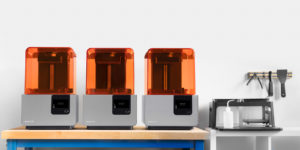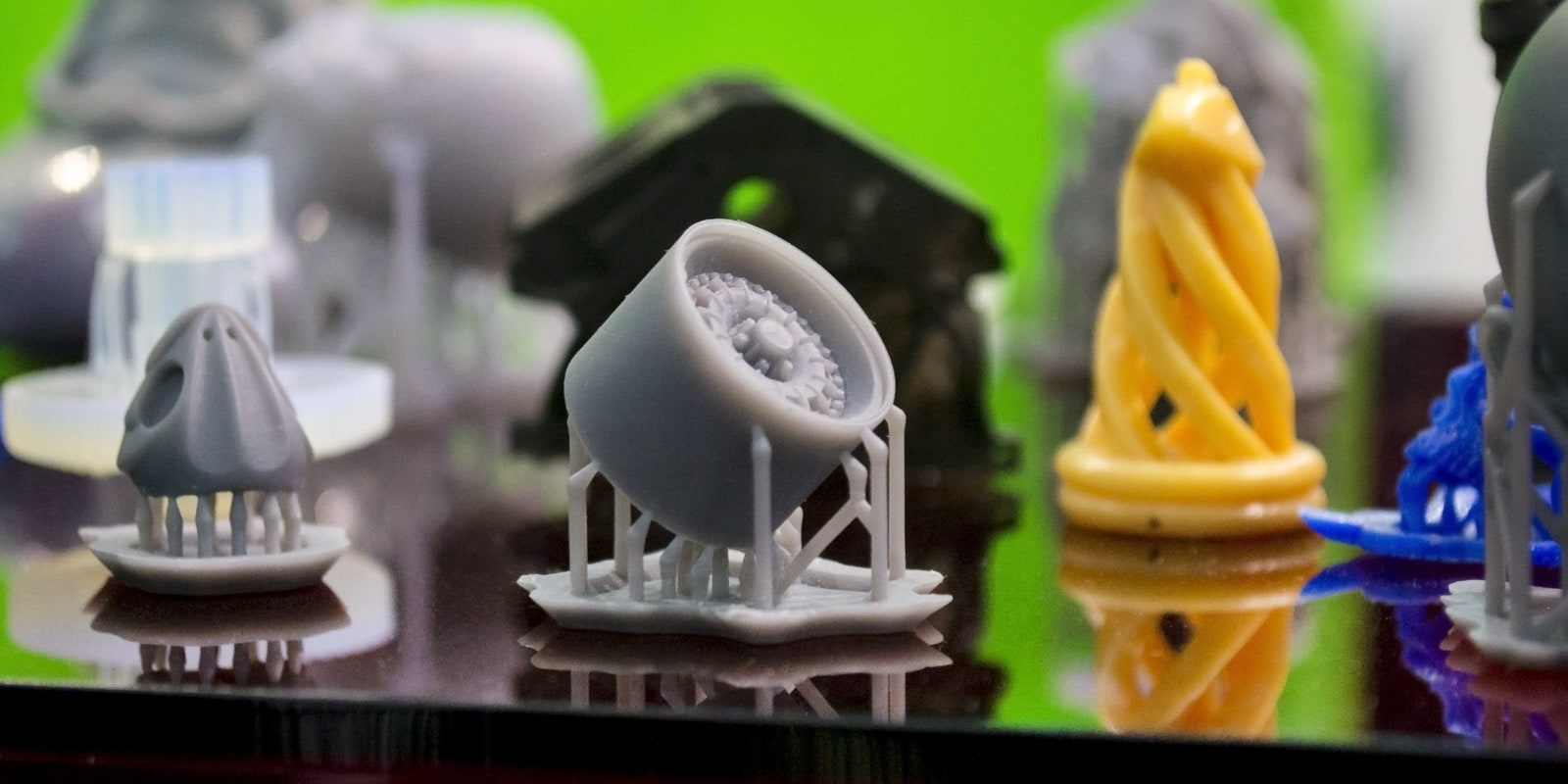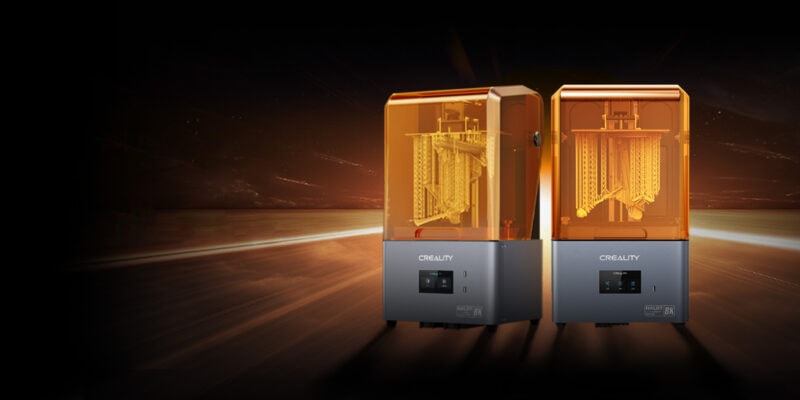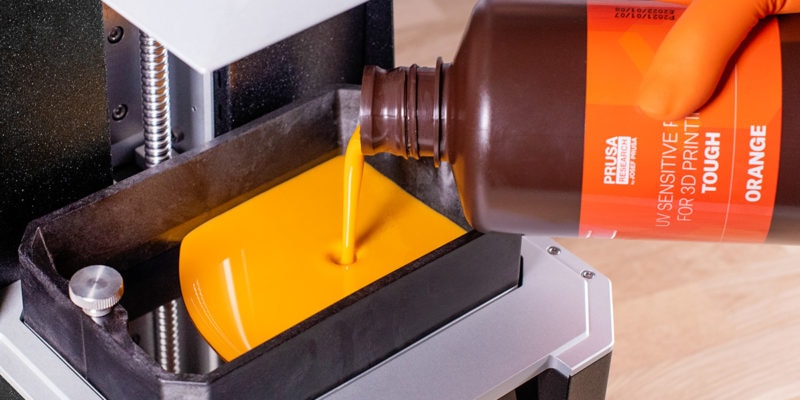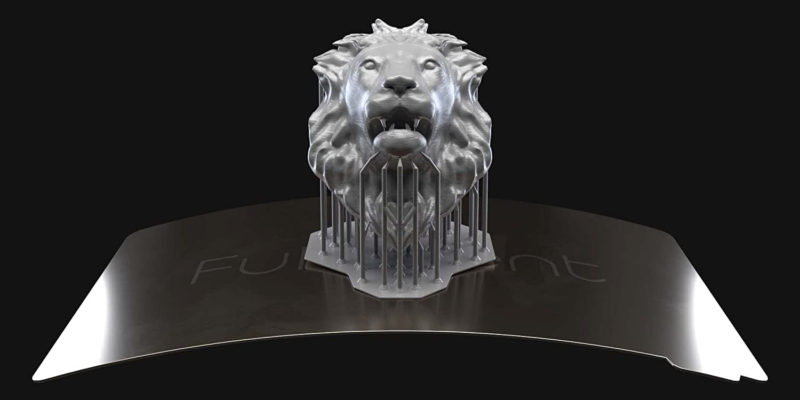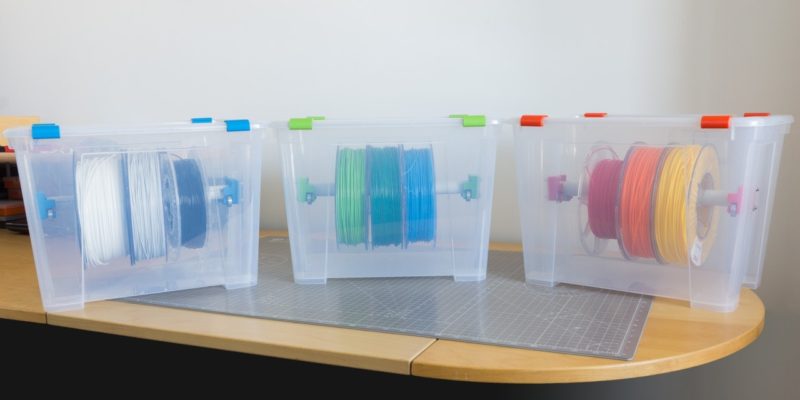Resin 3D printers will suit you the best if your main objective is to get highly detailed 3D prints with a smooth surface finish. On the flip side, if you’re looking for a 3D printer that can be used with less post-processing and to print larger-sized objects, an FDM 3D printer is an excellent choice for you.
Resin vs filament 3D printing is frequently discussed among 3D printing enthusiasts, hobbyists, and professionals alike. While there are some similarities between the two, there are also some very noticeable differences between the two technologies.
Resin printers use a photosensitive resin cured using a UV light source. No heat is generated, and the 3D printer itself has minimal moving parts. In filament printing, the plastic material is heated and extruded out of a nozzle. The high heat causes the material to fuse to the previous layer of the plastic, and this process is repeated over and over again.
In both cases, the object is created layer by layer. However, due to the different methods used in FDM and resin printing, there are crucial differences in their applications.
Read on to find out how FDM and resin 3D printing compare and how to choose which one is the best for you.
What is Filament 3D Printing?
Fused Deposition Modeling (FDM) or Fused Filament Fabrication (FFF) is an additive manufacturing technique in which the 3D printer deposits layers of plastic filament on top of each other. The high temperature of this extruded filament causes it to fuse to the previous layers.

Filament printing is one of the most commonly used 3D printing techniques, and the ease of use coupled with a lower entry price makes it the best suit for many people. You can use it in schools for educational purposes, maker spaces for prototyping ideas, your homes for hobby purposes, and even in industries for rapid prototyping.
There are a variety of filament materials that you can use with FDM printers. PLA, ABS, and PETG are common types of cheap and easily accessible plastics. If you look at filament materials for industrial applications, you encounter PEEK, Carbon Fibre, Polycarbonate, and Nylon. These materials extend the capabilities of FDM printing way beyond just prototyping.
While the FDM filament printers are excellent in many aspects, print quality and surface finish are not their strong points. FDM prints have a grainy appearance, and the printed objects can have traces of stringing. While these are not really issues, they can be annoying for those who want their 3D printed objects to look as good as the ones manufactured through injection molding.
You will notice a significant limitation in quality when 3D printing miniatures, figurines, small texts, or models with intricate details. This is where resin 3D printers take the lead over FDM printers.
What is Resin 3D Printing?
In resin printing, a UV light is used to cure a layer of photosensitive 3D printer resin. Once a single resin layer is cured, the print bed rises slightly to allow the influx of fresh, uncured resin into the resin tank. This layer of new resin is cured again, and thus the process keeps on repeating till the very end.

Depending on the light source used, we can classify resin printing into stereolithography (SLA) and masked Stereolithography (MSLA).
SLA printing uses a laser beam as its light source, and the laser traces an entire layer of the model’s cross-section point-by-point, which results in higher accuracy and detail on the final 3D printed resin model.
MSLA printers use an array of UV lamps and an LCD screen to cure an entire resin layer in a single go. It results in faster layer curing times but slightly decreases the quality compared to SLA printing.
Nonetheless, the quality that you get in resin printing is second to none. Resin printers can achieve lower layer heights as low as 10 microns, making it hard to distinguish individual layers with the naked eye. It results in an exceptional-looking piece with a smooth surface finish.
The caveat, though, is the small print bed of resin printers limits you to printing only smaller-sized objects. Add to that the messy operation with the liquid resin and the tedious post-processing involved, and you might start to evaluate whether the quality delivered by resin printers is worth it for you.
Filament vs Resin: What’s the Difference?
Print Quality
The print quality of a 3D printed component is considered by evaluating its surface smoothness, layer visibility, and the overall fit and finish of the piece. Resin printers have a superior output part quality compared to FDM printers.
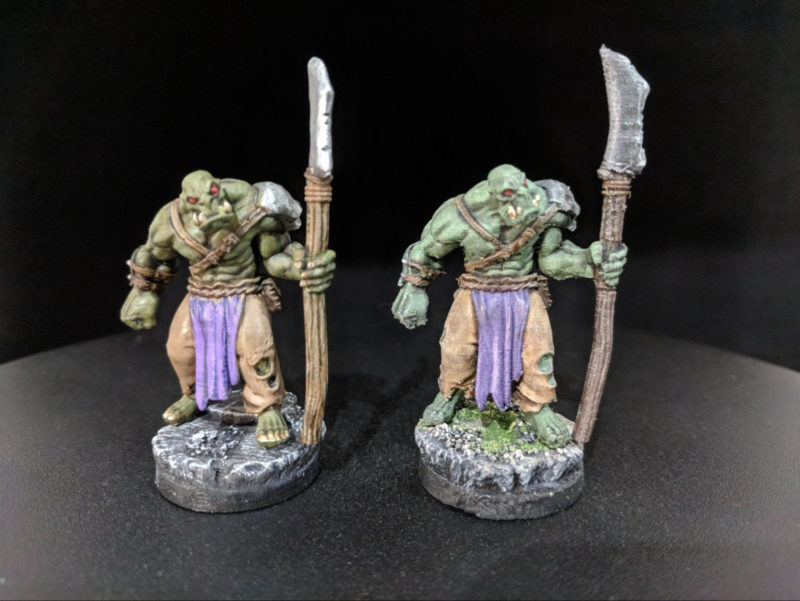
The excellent print quality of the resin printers can be attributed to the methodology used in curing the resin. Resin printers use a photosensitive resin that cures when exposed to a UV light source. It eliminates the need for any heat source and eradicates the side-effects of expansion and contraction of the part caused due to high temperatures.
Moreover, due to this technique, resin printers can print at incredibly low layer heights as low as 10 microns, resulting in dimensionally accurate prints with a higher surface finish and a smooth appearance. In comparison, FDM printers can typically print at a layer height of 100-200 microns.
While this layer thickness does not make any FDM printer any less unusable, they’re nowhere near resin prints in terms of quality.
Strength
In terms of the strength of 3D printed pieces, filament printing ranks above resin prints. Filament prints have a higher tensile strength, sustain better impact loads, and do not decay as quickly when exposed to the outside environment.
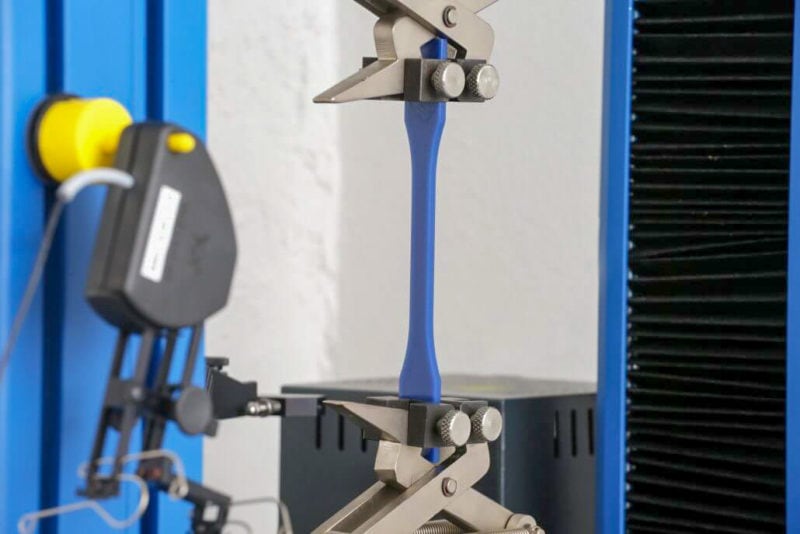
Standard thermoplastic filament such as ABS filament, PETG, Nylon, and Polycarbonate have better mechanical characteristics in terms of toughness, elasticity, and rigidity when compared to a 3D print done using a standard resin.
Parts produced on resin printers are hard, brittle, and can easily break away under impact loads. As the liquid resin used in a resin printer is sensitive to UV light, if you keep your resin pieces out in the sun, their color will start to fade away and will start to become more brittle over time.
However, the exceptions start when you begin using specially formulated resins such as Prusa Tough resin, Elegoo ABS-like resin, and other engineering resins. These resins are developed to address the shortcomings in the standard liquid resin, and in some applications, these might even outshine filament prints.
Materials
The choice of materials available in both filament and resin 3D printers is plenty. Common plastics, high-grade thermoplastics, carbon fiber, reinforced plastics, and metal fill materials are just a few of the examples available in filament printing. For resin printers, there are dental resins, castable resins, sculpting resin, and even translucent resins.
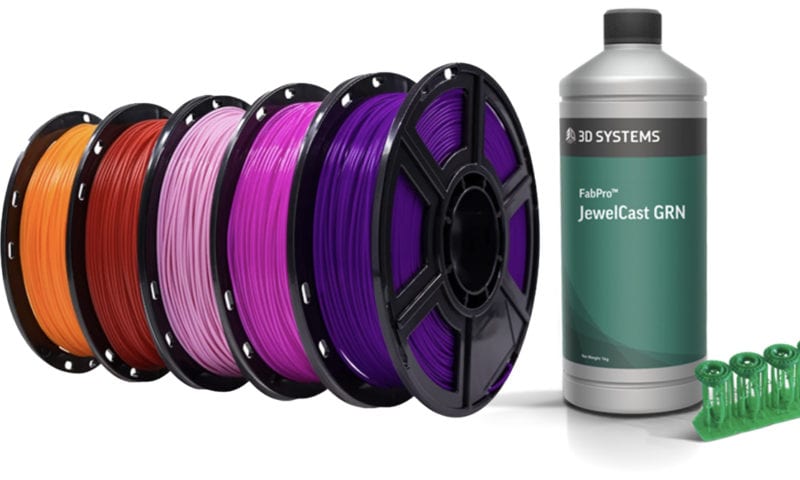
PLA, ABS, and PETG are commonly used in filament printing as they are cheap and easily accessible materials. You can use them for educational purposes, hobbies, and even some basic practical applications such as preparing mold patterns or household repairs.
Then you have the higher end of thermoplastics which cover ASA, Nylon, Polycarbonate, ULTEM, and PEEK. These materials are expensive, not easily accessible, and specially developed for high-end use or applications in which material strength is the ultimate criteria.
As opposed to this, resin 3D prints are seldom used in high demanding applications. You will often find resin 3D printed pieces used in miniatures modeling, medical and dental applications, jewelry, and manufacturing showpieces. There are engineering resins formulated to suit specific applications such as consumer applications, molds, and tooling.
Costs
If you carefully look at the expenses involved in resin vs FDM 3D printing, it is apparent that resin printing is costlier in nearly all aspects. We can break down the various costs of these techniques into three main categories: initial investment, material costs, and operating and maintenance costs.
Earlier resin printers were far more expensive for a hobbyist or a consumer to purchase for simple uses. Now, however, you can get a good resin 3D printer for as low as $200-300. Despite having a low 3D printer cost, these machines come with all basic features and are sufficient for casual use.
However, the caveat is that most consumer-level resin 3D printers have a small print bed. A budget resin printer has almost half the build volume of a similarly priced FDM printer, and it means that the price per area of resin 3D printers is significantly higher than an FDM 3D printer.
Similarly, resin as a material is costly compared to FDM plastics. A 1-liter bottle of standard resin can start at $40, and specialized resin costs will go as high as $300. On the other hand, FDM filaments come in standard 1 kg rolls and the basic ones cost as low as $20, with higher-end engineering plastics costing up to $100/kg.
Resin printers involve a lot of operation and maintenance costs too. You need an extensive post-processing setup, FEP film replacements, gloves, and extra masks for handling, and all of this adds to additional expenses in consumables. You can get away without post-processing with FDM printers. Regular maintenance costs are lower than with resin 3D printers as well.
Post-Processing
Post-processing is the final step in the entire 3D printing workflow. It involves removing any support materials, cleaning the models, eliminating surface defects, and preparing the model for its final use.

A resin print is incomplete without the post-processing process. You need to wash and clean the excess resin from the model, and then you need to cure the resin prints to give the resin prints their desired mechanical characteristics. All of this requires an extensive setup and can get messy. Typical setups include a wash and cure station and a variety of other resin 3D printing accessories.
In filament 3D printing, if you want to, once the printing process is completed, you can remove the print from the print bed and use it as it is without any post-processing. In the case of ABS, Nylon, and other engineering plastics, you can try annealing them to improve their mechanical characteristics, but it is not mandatory.
Health and Safety
The health and safety aspect of 3D printing is often underrated. On the surface, filament printing seems to be safer and less harmful than resin 3D printing. However, on a close look, you’ll find that a resin printer and a filament printer both come with safety and health considerations.
The liquid resin used in resin printers is toxic, and you might get rashes or blisters if you spill the resin on your bare skin. Likewise, the UV light lamp is not suitable for the naked eye, and you should always wear UV-blocking glasses while operating a resin printer. You should also use masks to minimize the foul resin smell and filter out the harmful resin fumes.
In FDM printing, PLA is the only material deemed to be safe and not release any harmful fumes. The rest of the materials, such as ABS, PETG, and Nylon, release toxic fumes into the atmosphere. You should either use an air filter, use the machine in a well-ventilated space, or make sure to use an enclosed 3D printer to counteract this.
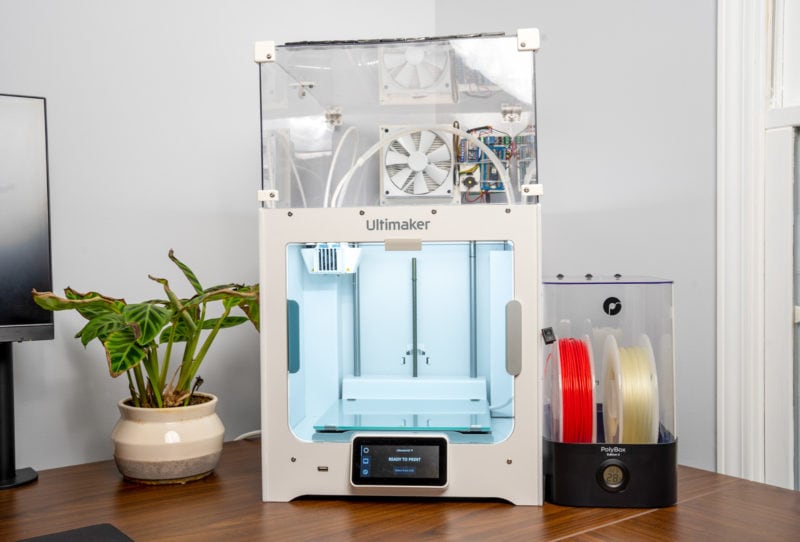
Another thing in FDM 3D printers is its heated elements: the hot end(s) and the heated printing bed. If you’re looking at open-frame 3D printers, you need to be careful not to let your kids or pets near these heated areas.
Filament or Resin: Which One Should You Use?
Resin 3D printing is not suitable for beginners in 3D printing. The learning curve to dial in the settings, extra gear required (nitrile gloves, masks, goggles), and the extensive post-processing might deter inexperienced users. The cost of resin printers and consumables is also something you need to consider in resin printing.
If you’re comfortable with these caveats, you’ll be amazed by the superior print quality and the smoother surface finish of resin printers. They’re well suited for printing miniatures, figurines, high-detailed sculpts, jewelry, and applications where print quality is of utmost importance.
Most people start 3D printing with a filament printer. They’re easy to use, have excellent online support, easy to fix, and most importantly, are budget-friendly to buy and operate. Due to this, you’ll find that FDM printers are commonly used in schools, homes, professional setups, and in 3D printing farms.
If the print quality is not on the top of your list and you want a machine that you can use to 3D print almost anything and everything, FDM printers will be best suited for you.
Best Filament and Resin 3D Printers
Prusa i3 MK3S+
Prusa 3D printers are already quite famous in the 3D printing community and are some of the best machines in the FDM 3D printing space. The Prusa i3 MK3S+ is no exception and is one of the best filament printers available right now.
It comes with a SuperPINDA probe for automatic mesh bed leveling and high-quality MISUMI bearings on the Y-axis for smooth bed motion. It offers other high-quality parts, such as Bondtech extruder gears, an E3D V6 hot end, and removable print sheets that enhance your 3D printing experience.
If you’re serious about getting into FDM 3D printing and want a 3D printer that is reliable, well-supported and delivers excellent printing quality, the Prusa i3 MK3S+ is worth more than the money you spend on it.
Elegoo Mars 3
The Elegoo Mars series introduced resin printing to the masses with affordable 3D printers that deliver high quality. The Elegoo Mars 3 is the newest addition to the Mars resin printers lineup and improves upon many aspects of its predecessors.
The Mars 3 comes with a 4K mono LCD screen, resulting in an incredible 35 μm XY resolution. It enables the Mars 3 to reproduce even the most delicate details, resulting in intricate 3D prints. Its curvy design is a fresh take in the budget resin 3D printers market, and the improved FEP film and an upgraded UV array are some of the minor updates in the 3D printer.
It’s relatively easy to use and comes with a free one-year Chitubox Pro subscription. If you want to 3D print high-detail miniatures, D&D armies, or even jewelry, the Elegoo Mars 3 will let you do so. At a price of just $350.00, it makes for a great resin 3D printer to get started with.
Conclusion
Resin and filament printing each has their own set of pros and cons. Resin printers deliver parts with excellent print quality and have a very high resolution, but they cost more, have a smaller print bed, and are messy to operate.
On the other hand, while fused deposition modeling (FDM) printers are easy to use, relatively cheap, and can easily print large objects, you cannot expect the same print quality as resin printers. They, however, offer a better overall package and are a good way to enter the 3D printing world.
When it comes to deciding between a resin vs filament 3D printer, the choice ultimately depends on which types of projects you will use it for.
If this article has helped you in any way about both the 3D printing techniques, do let us know in the comments.
